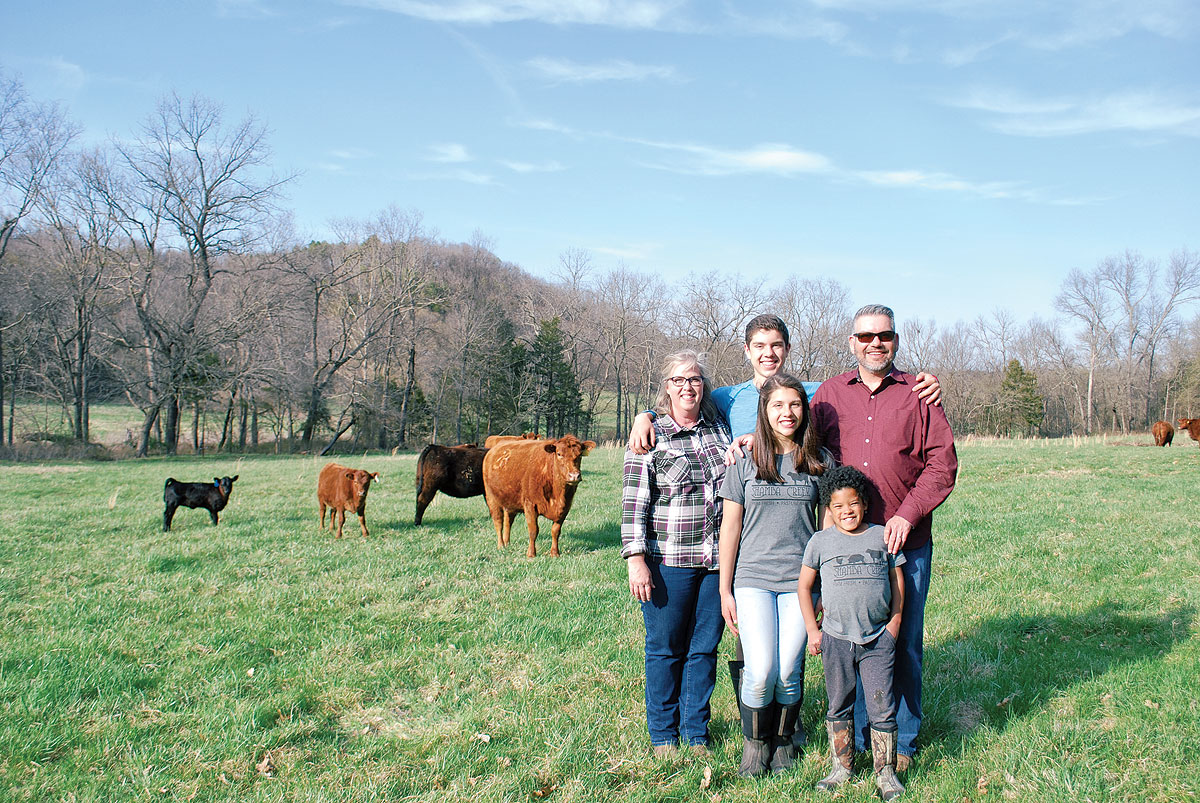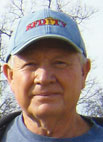
Family works together to produce naturally-raised livestock at Shamba Creek Farm
Nestled back in the hills of the Ozarks, down a winding, curving, dirt road and across a creek, lies a little oasis, a family-farm, a Shamba.
“Shamba is the Swahili word for a cultivated plot of land, but in the heart of the people of Kenya, Africa, it means so much more,” explained mother and farm manager Adrienne Terrazas.
Shamba Creek Farm is located north of Pea Ridge, Ark., and resides on 79 luscious green acres. The Terrazas Family is a group of five: father Tim, mother Adrienne, and children, Nick, Katherine and Nathan.
The Terrazas’ are working to implement sustainable practices to provide the highest quality of fresh protein for their family and community. On the farm, you’ll find, laying hens, seasonal broilers, pasture-raised Large Black hogs, a flock of crossed Katahdin and Dorper sheep and registered Red Angus cattle.
“Our children have severe food allergies and intolerances. We had the opportunity to spend a year in Kenya and ate mostly clean, fresh foods and saw their allergies decline and our overall health improve, and we wanted to continue eating in such a manner once we got back home,” said Adrienne. “We initially wanted to simply raise the fresh food for our family, and we started out doing just that with a small flock of laying hens about six years ago. We’ve been blessed with more land than we originally planned for when we purchased the farm in 2016, and saw an opportunity to feed our community as well.”
While Tim works a full-time off-farm job, Adrienne and the kids, who are homeschooled, manage the day-to-day chores and sales. Shamba Creek Farm markets and sells USDA inspected, pasture-raised, non-GMO, lamb, pork, chicken and eggs at the Bentonville Farmers Market and online through their website, with delivery directly to customers.
Currently residing on the farm are 10 head of cattle, 29 in the flock of sheep and a lot of chickens that are rotated through the pasture operation; the 21 hogs have a nice area with open and forested ground.
“Our cows go through a paddock first, followed by the sheep, and then the chickens. This maximizes the forage utilization since each species eats different grasses. We are trying to regenerate the soil by having the different species on each pasture and we are trying to eliminate parasites and flies through multi-species grazing,” explained Adrienne.
With the success from rotational grazing, there are generally few health concerns on the farm. The cows are vaccinated, but other species are not on a routine program and are generally only dewormed as necessary.
In getting inspiration through the Joel Salatin process and methodologies, working with the NRCS to develop their grazing and watering system, and cultivating relationships with mentors along the way, Shamba Creek Farm is on the road to success to continue growing.
“We plan to grow our herds and flocks organically at this time; we want to honor the land and not overwork it, so we will maintain our numbers to what the land can handle,” Adrienne said.
Currently, the farm numbers are maintained through raising their own breeding and replacement stock and also purchasing outside stock when the demand and need arises.
Each member of the family enjoys a particular part of the farm more than others. Nick said he really enjoys the hogs, Katherine is all about the puppies they have from their Maremma livestock guardian dogs, but enjoys the sheep. Nathan is the chicken whisperer. Tim is fond of the cattle operation and the fact the rotational grazing allowed them to only feed hay for a couple of months this past winter. Adrienne gets most excited about the great benefits the farm gives her family, from the healthy food to the time spent in nature and working the land and animals together.
Adrienne expressed her love for the farm by describing their time in Kenya, where their friends talked about going home to their Shamba.
“They (Kenyans) always spoke of their Shamba with joy and longing to be there with the rest of their family. When we found our land, it felt like home and we understood the longing to live there.”






